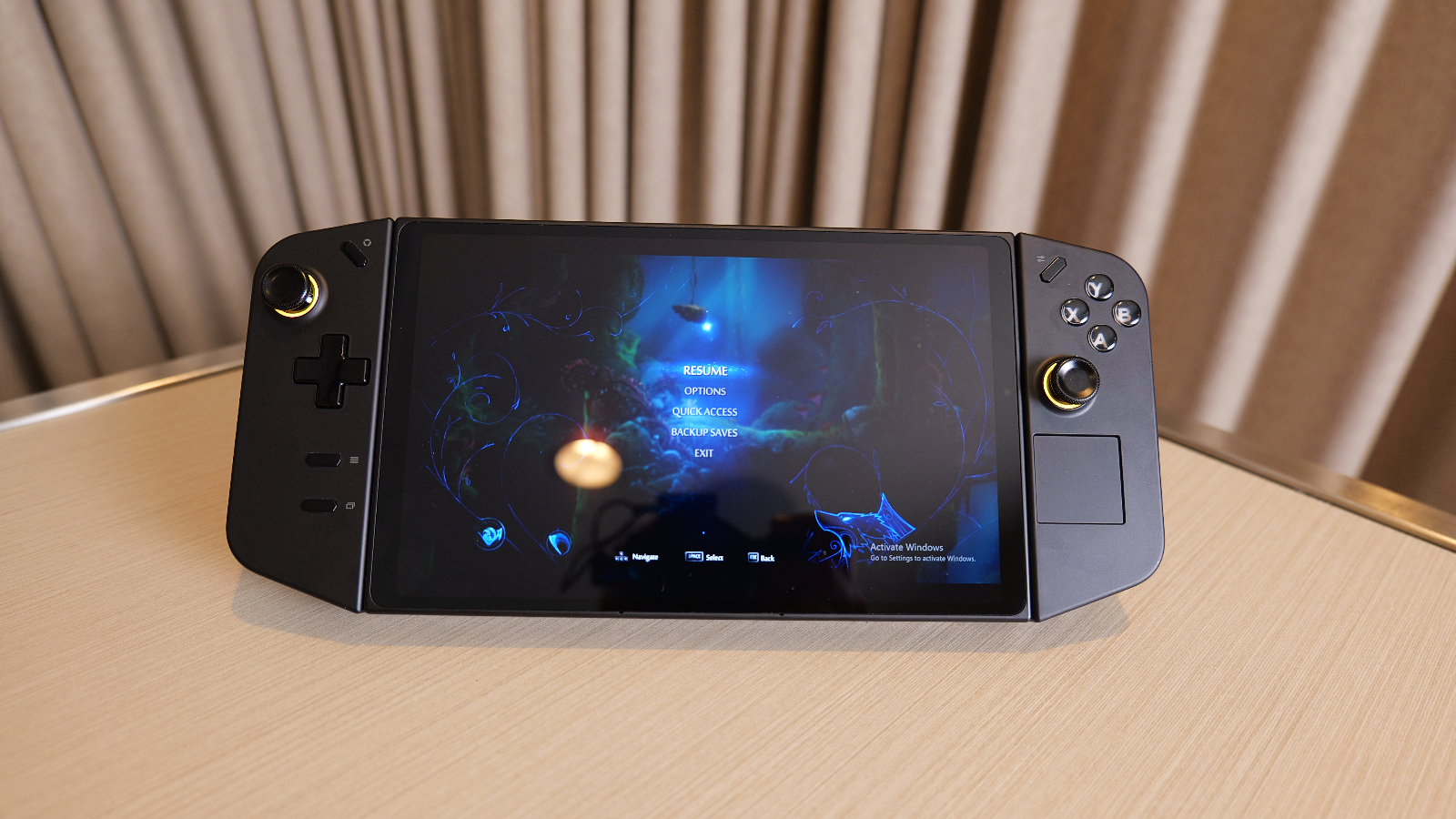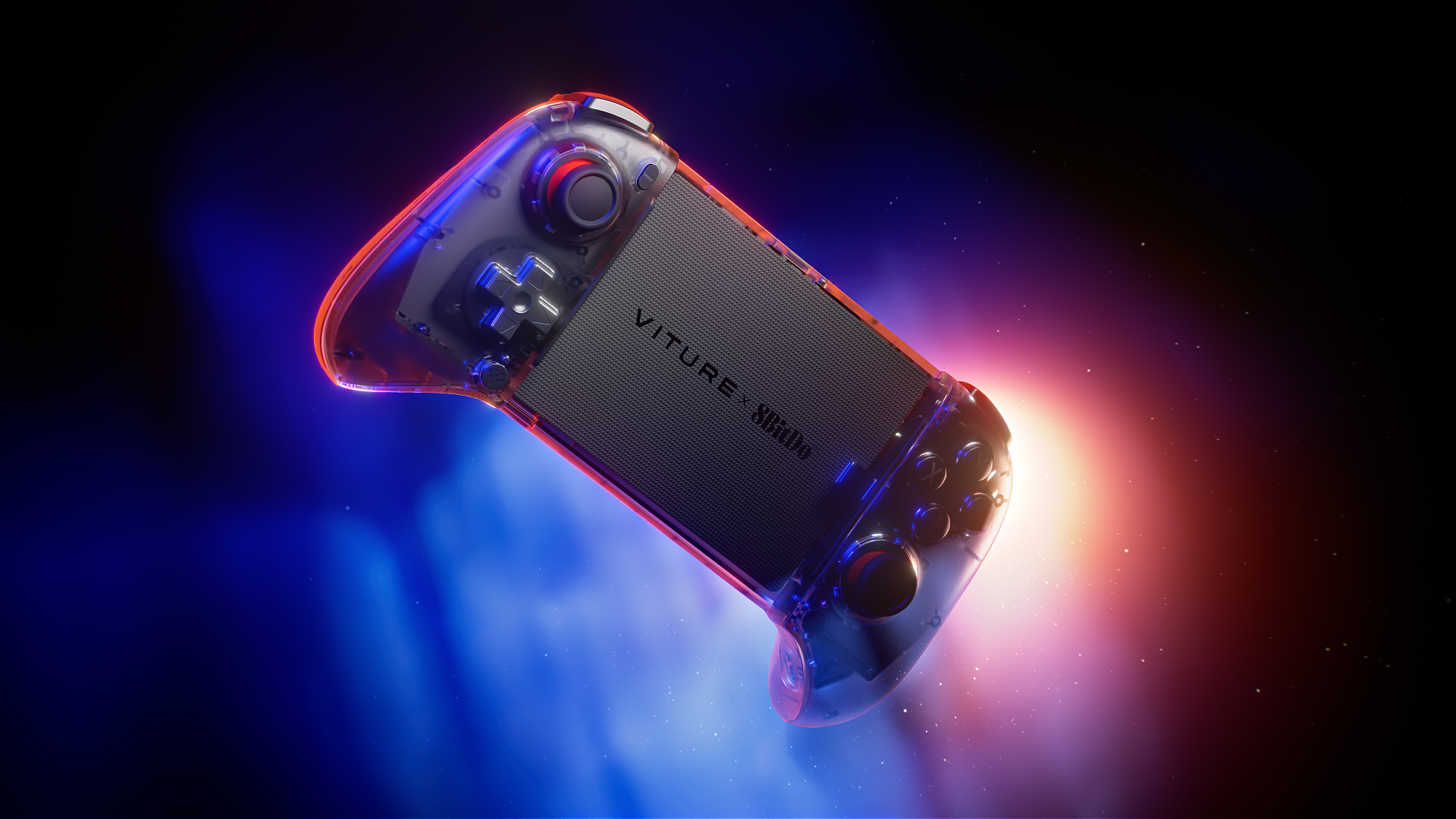Early Verdict
The Lenovo Legion Go brings a gorgeous display, removable controllers and powerful performance in a chunky chassis with competitive pricing.
Pros
- +
Large, vivid display
- +
Smooth performance
- +
Removable,versatile controllers
- +
Competitively priced
Cons
- -
Heavy
Why you can trust Laptop Mag
Whew, this feels a little bit like deja vu. A sexy-looking PC gaming handheld is announced, I get all hot and bothered and then when the testing hits, it falls short of my fevered expectations. But after needing someone to almost pry the Lenovo Legion Go out of my hands during my demo, I feel like this might be different. It’s clear the company has learned from the missteps of its competitors, resulting in a device that takes some of their best features and components, that feels at once familiar and new, thrusting itself onto our best handheld gaming devices page.
Lenovo Legion Go pricing and availability
Some of the best gaming laptops under $1,000 might just be a gaming handheld. When it launches in October, the Legion Go will cost $699 which gets you an AMD Ryzen Z1 Extreme processor with AMD RDNA 3 Graphics, 16GB of RAM, up to 1TB of PCIe 4.0 NVMe M.2 2242 SSD storage and an 8.8-inch, 2560 x 1600-pixel touchscreen display.
The Go’s pricing matches the Asus ROG Ally and is $50 more than the top-end Steam Deck. Lenovo has hinted that a less expensive base model may come to market, but hasn’t provided further detail.
Lenovo Legion Go design
The Legion Go is a seriously chunky boy, so much so that it’s bound to be polarizing. I, for one, think the bulk adds a reassuring substantialness to the device. It’s a sacrifice I’m willing to make in favor of a (slightly) larger battery and potentially better thermals. But Andrew Freedman, my colleague and Senior Editor over at Tom’s Hardware, disagrees, preferring the lighter ROG Ally. He said he immediately felt compelled to use the integrated kickstand, while I thought it felt plenty good while I made my way through Ori and the Will of the Wisps. However, I can definitely see my arms getting tired after a while and having to unfurl that kickstand myself.
So just how much does the 8.3 x 5.2 x 0.79-inch Go weigh? Sans controllers (yes, the controllers are detachable), the Legion Go tips the scales at 22.6 ounces. Fully intact, the device weighs 30.1 ounces. The Ally comes in 21.4 ounces while the Steam Deck hits 23.5 ounces. The Nintendo Switch OLED continues its reign as the lightest handheld on the block at 14.9 ounces.
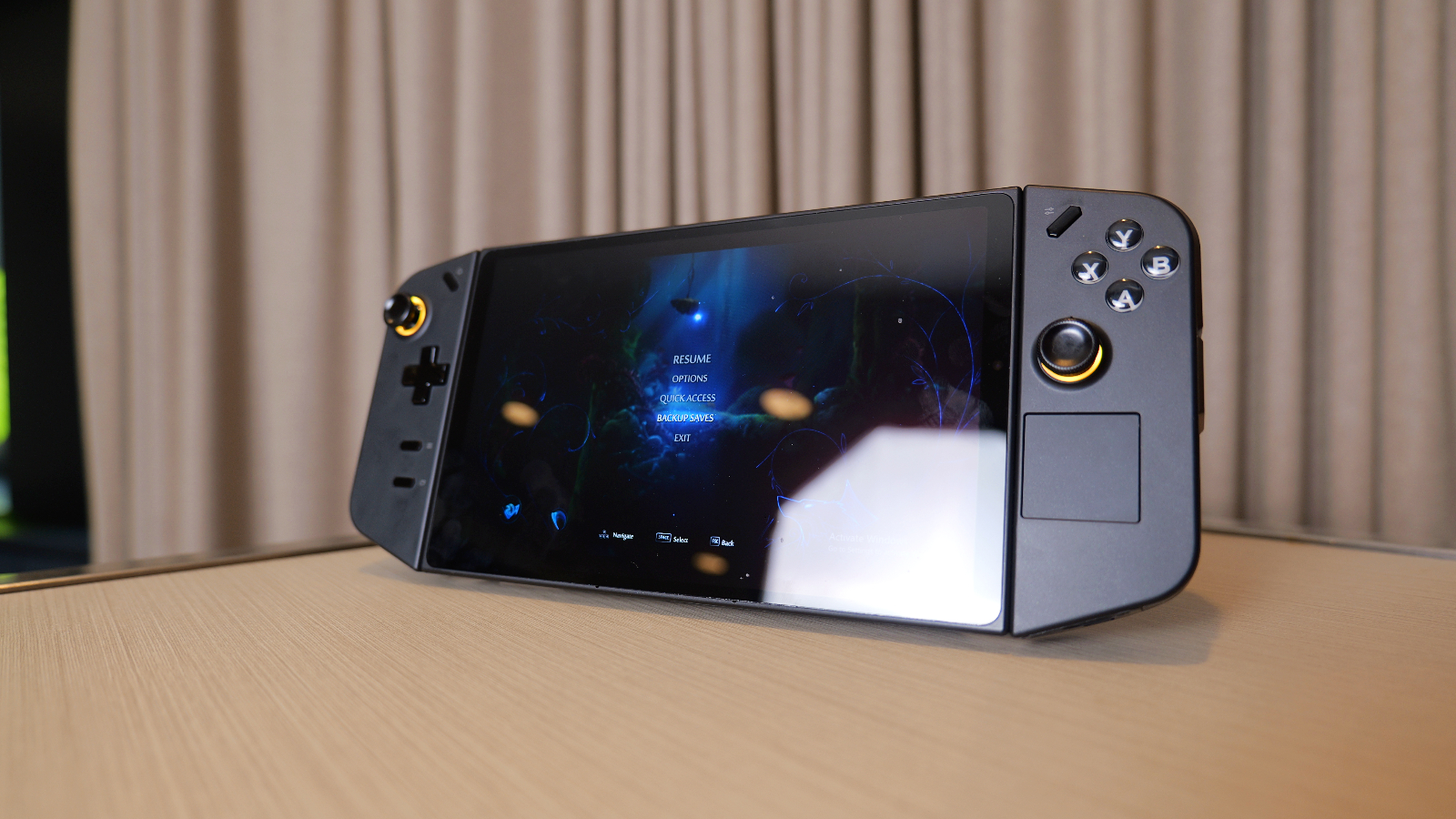
But it’s not just the weight that makes the Go stand out, it’s also got some chunky dimensions at 11.8 x 5.2 x 1.6 inches. It’s somewhat larger than the Steam Deck 11.7 x 4.6 x 1.9 inches although the latter is thicker. The Ally (11 x 4.4 x 0.8 inches) and the Switch OLED (9.5 x 4 x 0.6 inches) are small by comparison.
Dimensions aside, the Go is a tank of a device. The majority of the housing is made from plastic, colored what Lenovo has dubbed Shadow Black. The top bumpers are made of a shiny brushed silver aluminum while the rear triggers are made of glossy black plastic. Similar to other handhelds, the Go has asymmetrical joysticks, each surrounded with RGB backlighting.
The right controller houses the Y, A, B and X buttons, along with a joystick and touchpad. Along the rear, you have a small scroll wheel and two centrally mounted triggers in a horizontal orientation. On the left controller sits the other stick, the D-pad and buttons for View and Menu. The two triggers on the back are set vertically instead of horizontally. Towards the bottom of both controllers sits the button to release the controllers from the main body of the device.
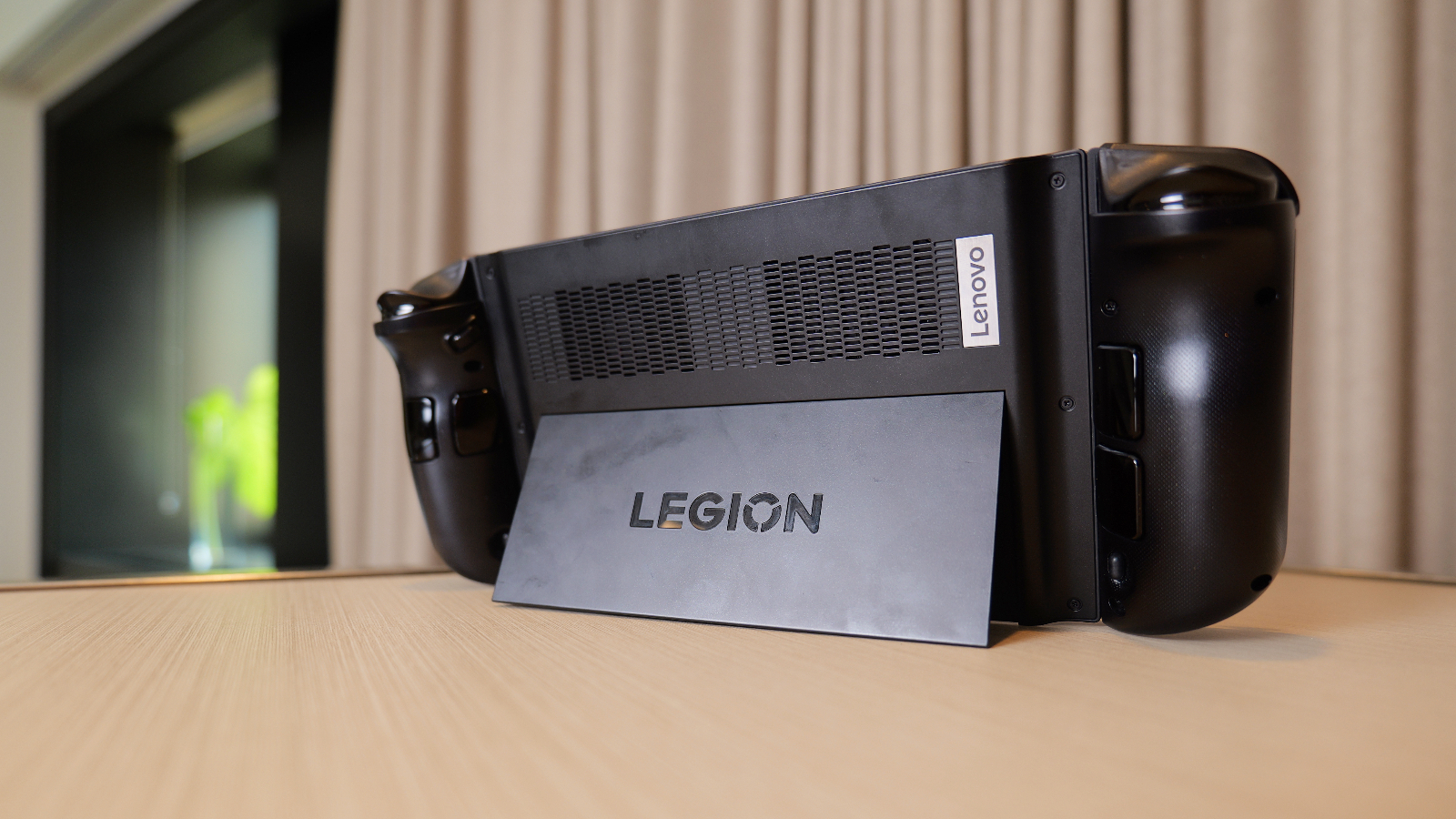
Nestled in between the controllers is the main body of the Go, which is mostly made up of the lovely 8.8-inch display. There are two USB-C ports on the body, one on top and another on the bottom. While both can be used for charging, they can also be utilized with the Lenovo Glasses or with a dock that may or may not be coming down the pipe. Other buttons found on the top of the device are the volume and power buttons. You also have the audio jack and a microSD slot that allows you to expand the storage up to 2TB.
Finally, in the back is a sturdy, adjustable kickstand that I imagine many of us will be using as the pure bulk of the Go will have most gamers eager to put the Go on a table or desk and give their arms a rest.
Lenovo Legion Go controls
In practice, the Legion Go TrueStrike controllers, when attached, remind me of the OG Xbox Duke controller with its bulk. I don’t particularly mind since I have long, spindly fingers, but those lacking piano fingers shouldn’t worry too much as I watched some of my fellow tech journalists with smaller hands handling the Legion Go no problem. Although I had only 30 minutes to play with the Go, it was really comfortable. Of course, I want to see how it feels an hour or two into playing, especially when playing fighting games where I tend to play in the claw position, which can cramp up after a while.
Taking a page out of the Nintendo Switch OLED’s book, you can remove the Legion Go’s TrueStrike controllers. However, much to my chagrin, there’s no dock to attach the loose controllers to in order to form a single controller. I don’t know if Nintendo has some weird patent that prevented Lenovo from doing this, but I really, really want one going forward.
But enough about what the Legion Go’s controllers can’t do, let’s talk about what they can. When disconnected from the main device, the right controller transforms into a lean, mean FPS machine. Click the FPS mode switch along the bottom, pop it into the included magnetic controller base and the peripheral with the integrated trackpad provides more precision and control, not unlike what you’d get from a traditional mouse and keyboard setup.
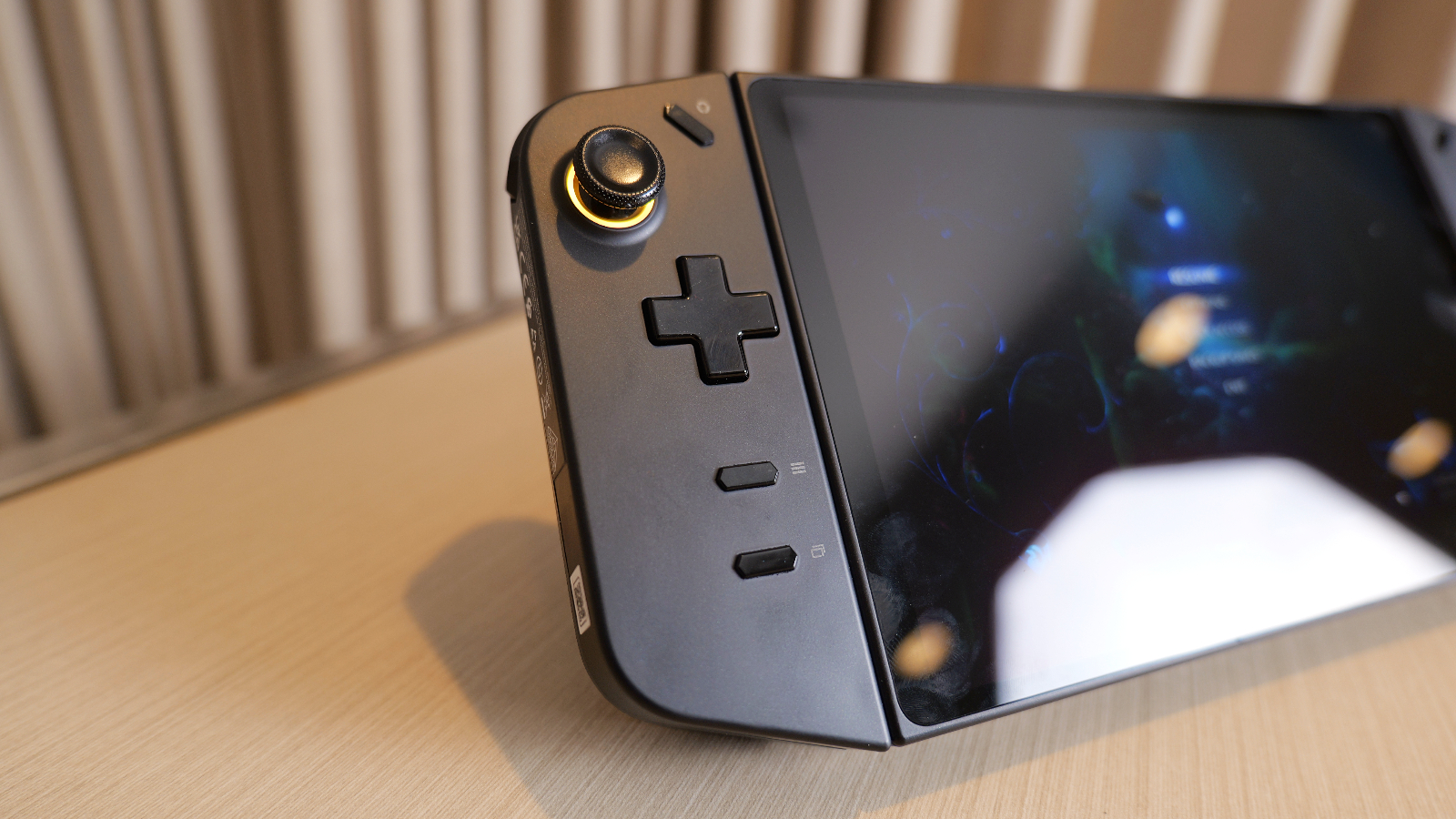
It took a minute for my mind and hand to adjust to the hold, particularly with the joystick poking into my palm. But in a few minutes, I was blasting my way through “Doom Eternal.” And while I did eventually get into a solid killing rhythm, I think this mode would be better served for RTS titles like “Starcraft” and “Age of Empires.” And if it can actually run on the Go, I could see this mode acting as a rudimentary option for games like “Microsoft Flight Simulator.”
While the detachable controllers will draw inevitable comparisons to the Switch, one place it differs is the lack of drift. Where there were many consumer complaints about controller drift from the Switch’s JoyCons, Lenovo claims that the TrueStrike controllers won’t experience any drift with minimal dead zones. Another cool feature is the customization features which allow gamers to map the 10 available buttons.
I’m looking forward to testing out all these features in a long-term demo. Stay tuned for the full review.
Lenovo Legion Go display
The Go’s 8.8-inch, 2560 x 1600, IPS display is beautiful. Dubbed PureSight by Lenovo, the display has a 16:10 aspect ratio with a 144Hz refresh rate. In terms of color gamut and brightness, Lenovo has the panel rated for 97% of the DCI-P3 gamut which is more vivid than both the Ally (76.1%) and the Steam Deck (48.5%). And where Lenovo is saying 500 nits of brightness, the Ally reached a bright 465 nits while the Steam Deck managed only 169.7 nits.
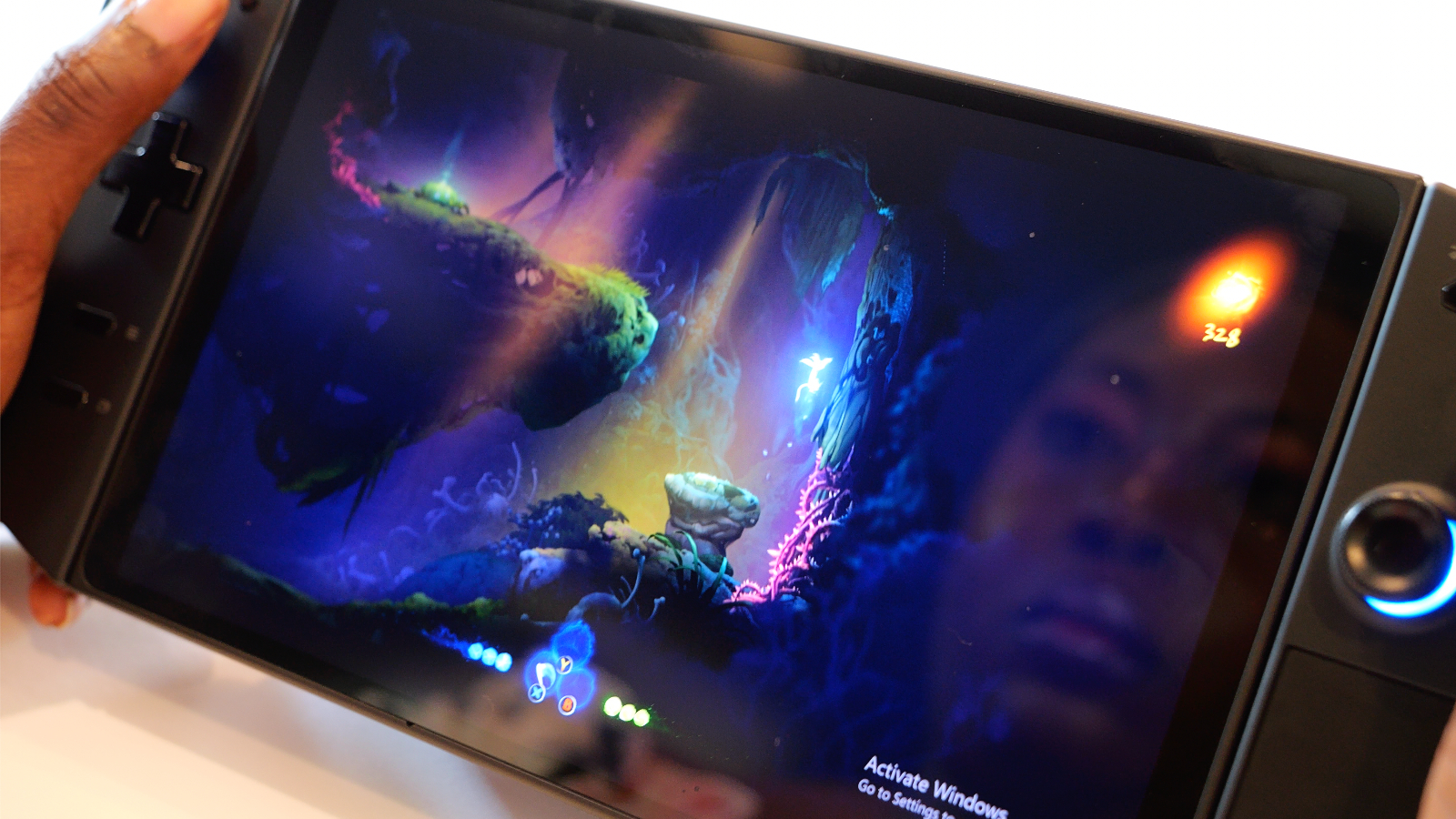
The panel lovingly reproduced the beautiful colors of Ori and the Will of the Wisps, one of my favorite Metroidvanias. Although I was navigating through the murky depths of the Swallow’s Nest and Inkwater Marsh, the contrast was deep enough to give the areas a sense of foreboding, but didn’t overpower the rest of the scenery. In fact, everything looked uber-vibrant including the bright pink spines of a worm-like enemy, the golden orbs that restored Ori’s life force and the billowing orange-red flame I used to beat back Howl, the game’s first boss.
I’m definitely curious to see how well the Go’s panel will hold up during benchmarking because to the naked eye, it looks gorgeous. In fact, it’s too gorgeous to muss up with greasy fingerprints trying to navigate the screen. Do yourself a favor and just use the touchpad on the right controller.
Lenovo Legion Go gaming and performance
Just like the Ally, the Go has an AMD Ryzen Z1 Extreme CPU with AMD RDNA 3 Graphics, so we kind of have an idea of what the Legion Go might be capable of. However, depending on software and slight hardware differences, there’s a chance that the Go can perform better or worse than Asus’ handheld. It’s Lenovo’s game to lose, literally and figuratively.
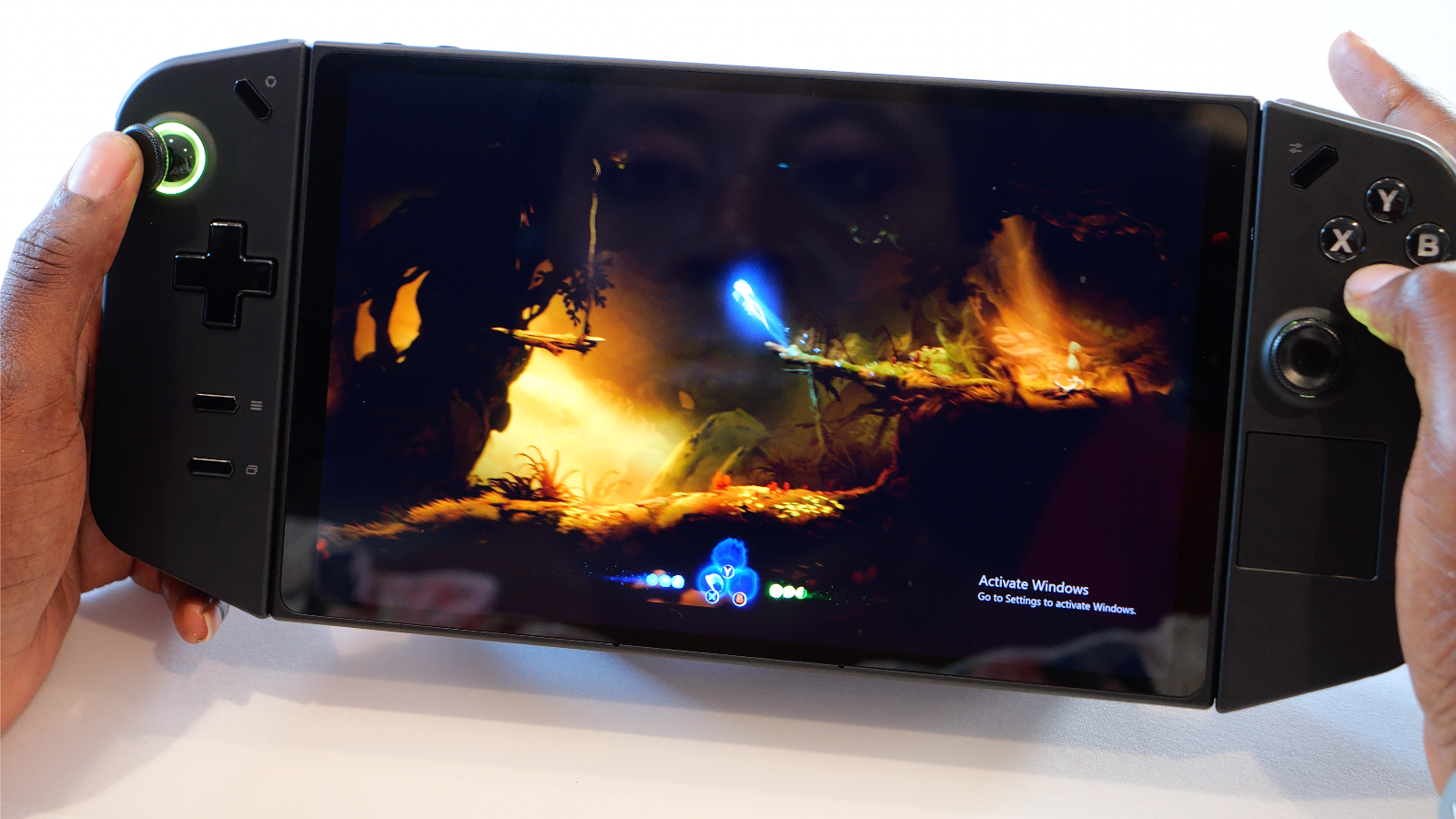
Assuming the Go will be in the same ballpark as the Ally, let’s take a look at how that handheld performed, starting with gaming. During the Assassin’s Creed Valhalla benchmark at 1080p on High, the Ally notched 29 frames per second, just a frame below our 30-fps playability threshold. Switching over to Dirt 5 on Medium, the Ally gave us 46 fps, edging out the Steam Deck (41 fps). On the Shadow of the Tomb Raider test (1080p, Medium), the ROG Ally scored 26 fps on Medium and was outdone by the Steam Deck’s 42 fps. The Steam Deck pulled out another win during the Cyberpunk 2077 benchmark, giving an output of 30 fps on both versions of the test, whereas the Ally reached 22 fps on Ultra and 25 fps the Steam Deck setting.
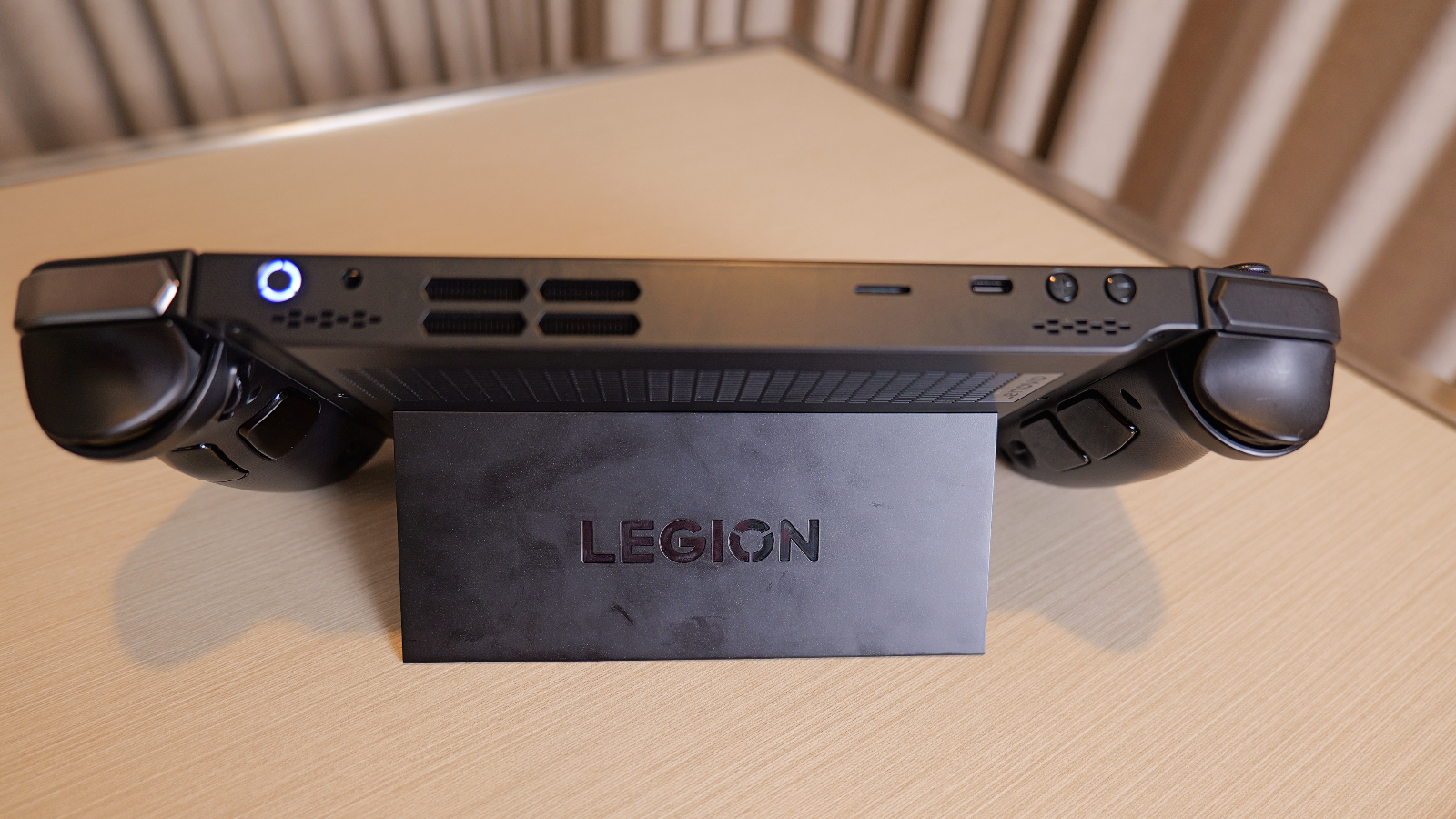
Now for overall performance, starting with Geekbench 5.5, the Ally is way out of Steam Deck’s league with the former hitting 10,614 and the latter reaching only 3,579. On the Handbrake video transcoding test, the ROG Ally converted a 4K video to 1080p in 4 minutes and 56 seconds while the Steam Deck finished with a sluggish time of 14:30. Finally, the Ally (512GB NVMe M.2 2230 SSD) destroyed our File Transfer test (duplicating 25GB of mixed media files) with a transfer speed of 768.9 megabytes per second. It absolutely smoked the Steam Deck’s (256GB NVMe SSD) 30.7MBps
Lenovo Legion Go games and compatibility
Similar to the Ally, you can host a number of game aggregators on the Legion Go to access most of your games. In fact, the Legion Go comes with a free three months of Xbox Game Pass. You can also use GOG, the Epic Games Store and, of course, Steam. And thankfully, navigating everything is a lot easier with the touchpad.
When you’re not gaming, the Legion Go is a full-blown Windows 11 machine, so you can use it as a tiny workstation or second display in a pinch. But who’s really going to use it for that?
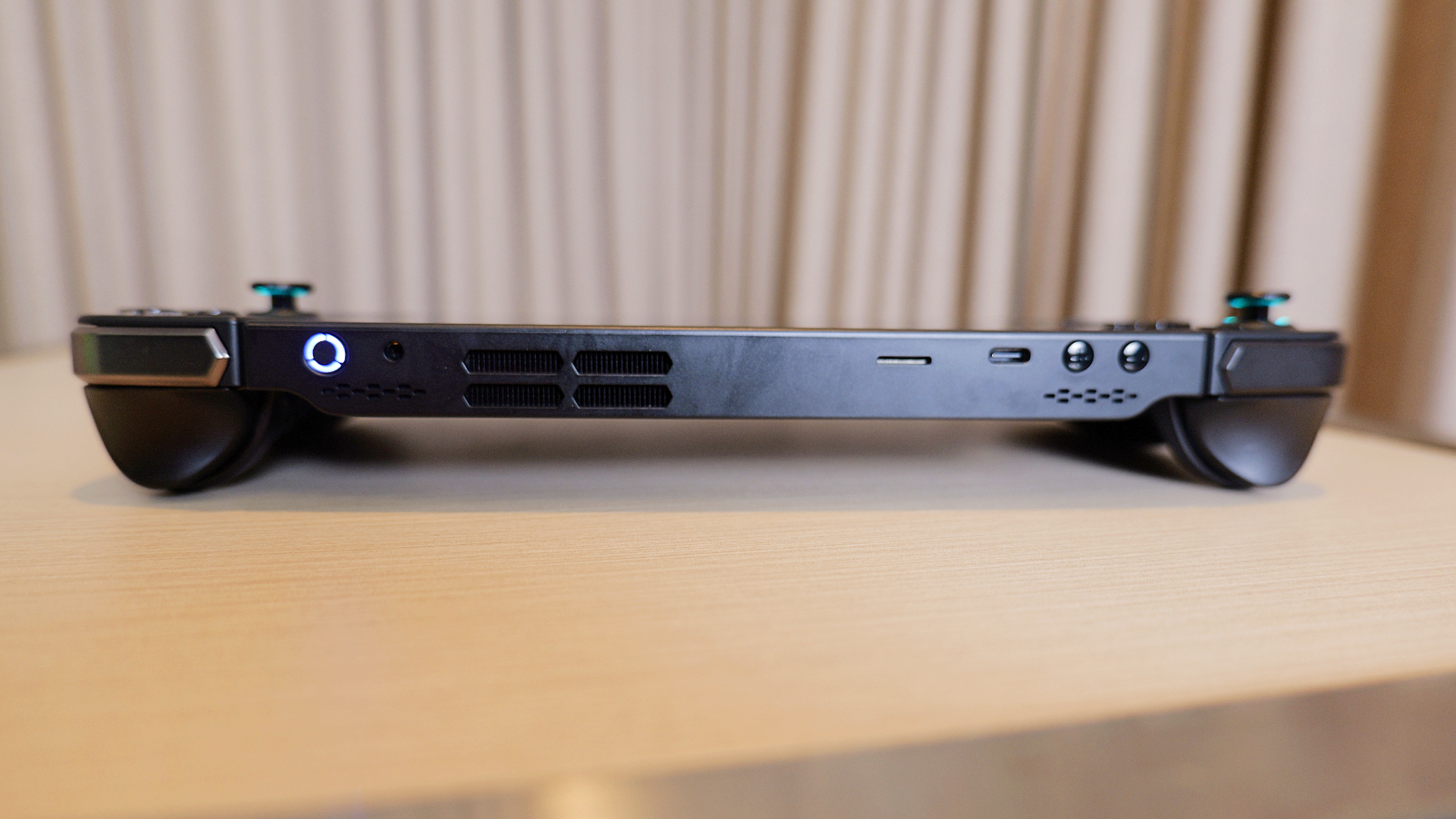
But with all of that stated, I do have one big concern. Although I went hands-on with an early version of the Go, I couldn’t help but notice that the Go lacked a launcher. That means that in order to access my games, I would need to constantly go back and forth between whatever game I’m playing to the Windows desktop to launch games. That doesn’t make for a great experience.
The Go will ship with the all-new Legion Space. As a proprietary software, Legion Space will act as the connective tissue, allowing users to quickly access all their various game platforms and stores. You’ll have the ability to purchase games through the Legion Game Store which works in collaboration with Xbox Game Pass Ultimate. Legion Space is also where you’ll access all of your locally installed games. This is also where you’ll be mapping your buttons.
Unfortunately, I didn’t get a chance to go demo the software. Fingers crossed it will be helpful and not an unwieldy albatross around the Go’s neck.
Lenovo Legion Go heat
One of the reasons the Legion Go is so chonky, is Lenovo’s trying to create as much space as possible to allow for venting to keep everything relatively cool. Because, let’s face it, there’s nothing worse than experiencing a slowdown when you’re at a critical point in the game, whatever you’re playing. At the center of this effort is the company’s Coldfront thermal technology which features a liquid crystal polymer 79-blade fan that keeps the device cool while still allowing the device to reach a full 25W of TGP in Custom Mode.
This should help during those extended gaming sessions, but I can’t wait for our infrared thermometer to give us the real story.
Lenovo Legion Go battery life
This is going to be tricky. Battery life on the Legion Go is really going to depend on what you’re playing and at what settings. And although it has a 49.2Wh battery, which is 23% larger than the Ally’s 40Wh cell, that big, beautiful display could prove to be the Go’s undoing. The Asus lasted 5 hours and 51 seconds on the Laptop Mag Battery Test (continuous web surfing over Wi-Fi at 150 nis of brightness), outpacing the Steam Deck’s 3:50.
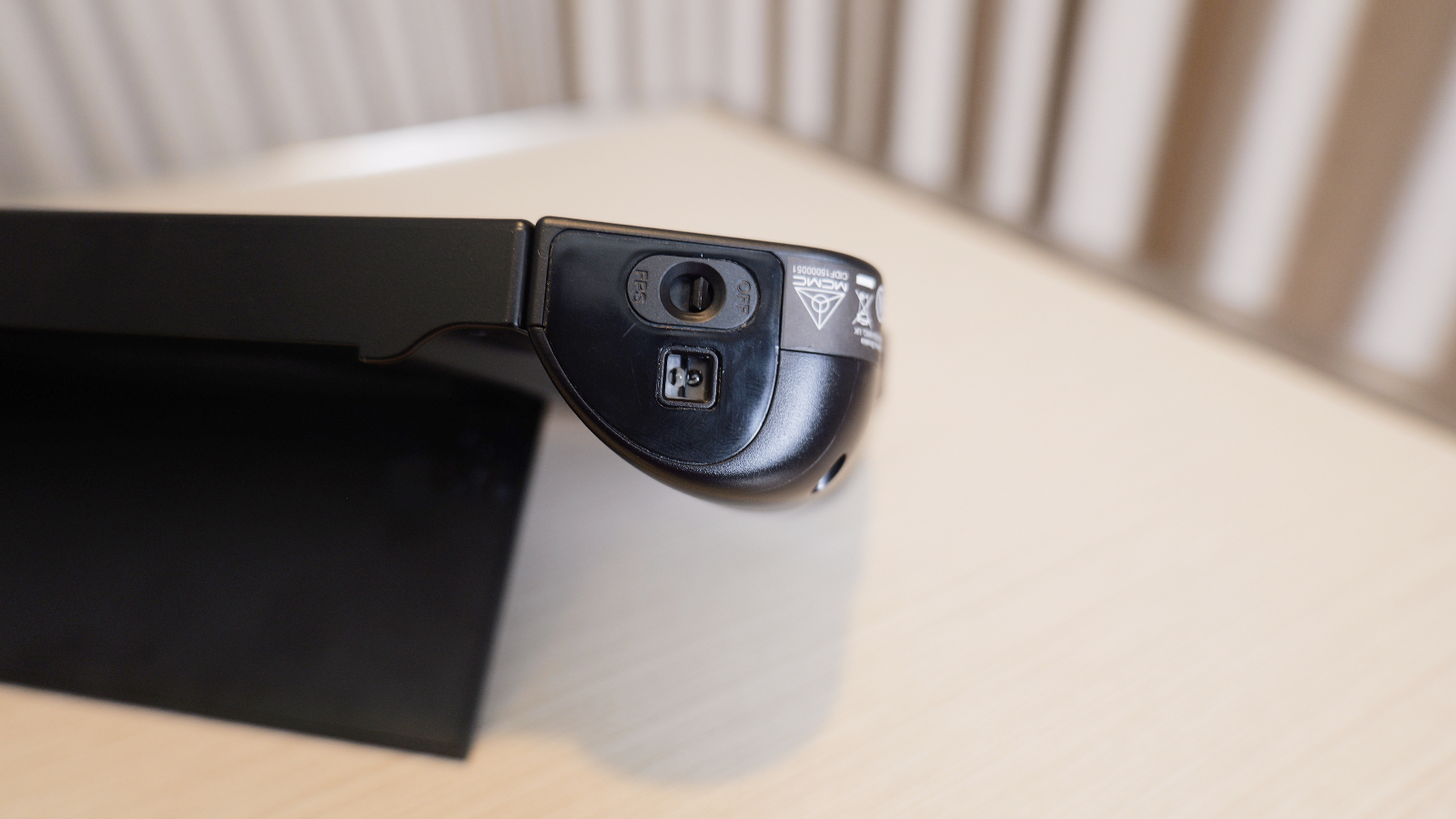
Whenever it taps out, the Go does offer fast charging capabilities, so you won’t be out of the game for too long. Still, I’m curious to see how long the Legion Go will last on our battery test.
Conclusion

Sherri L. Smith has been cranking out product reviews for Laptopmag.com since 2011. In that time, she's reviewed more than her share of laptops, tablets, smartphones and everything in between. The resident gamer and audio junkie, Sherri was previously a managing editor for Black Web 2.0 and contributed to BET.Com and Popgadget.
